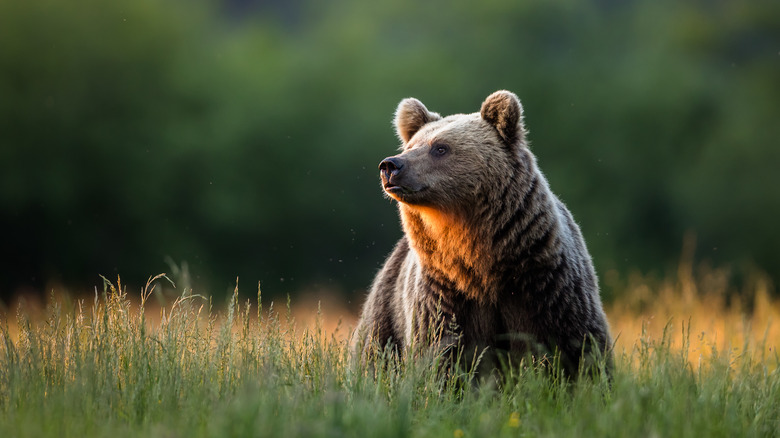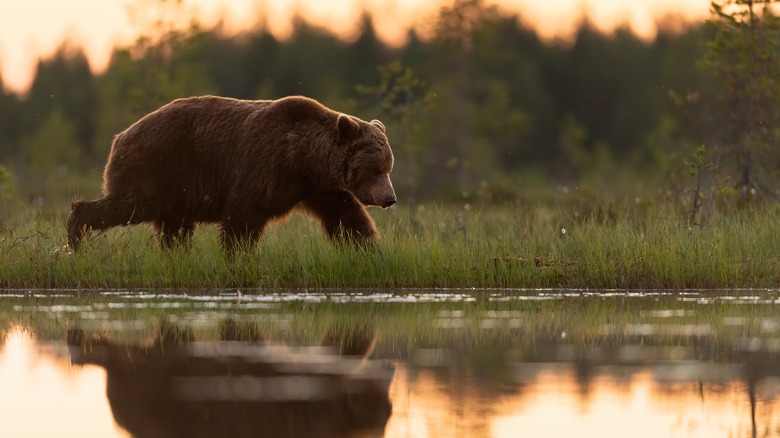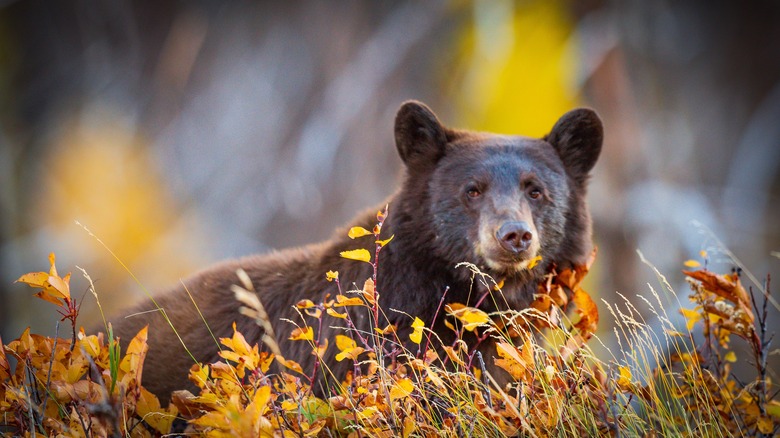Why You Should Keep An Eye Out For Bears During These Times Of Day
Bears are commonly found throughout North America. Black bears, in particular, are widespread, being found in 40 of the 50 states in the U.S and every Canadian territory and province (except Prince Edward Island). Grizzlies also inhabit some of this area, particularly in the northwest United States and western Canada. The wide distribution coupled with the potential threat brings mixed emotions among outdoor enthusiasts. Some seek out ways and places to get incredible views of bears, while others do all they can to keep them away while camping and adventuring.
Regardless of whether you are hoping to see these animals or avoid such encounters, knowing the hours in which they are typically most active will help. So, just as it is important to know what to do if attacked by a bear when adventuring in their territory, it is just as important to understand why you should keep an eye out for them during these times of day. Doing so will aid in your quest to view bears safely or avoid them altogether.
Bears are most active early and late in the day during spring and summer
In general, you are more likely to run into a bear during your summer adventures than at other times of year. From spring through summer, bears are not only awake from their winter hibernation, they are covering larger geographic areas in their quest to mate. But, even within those seasons, they remain most active during certain periods of the day, most notably dusk and dawn. The typical day for a bear during spring and summer goes something like this: wake up, search for food, take a nap, then awaken and search for food once more before hunkering down for the night a couple hours after sunset.
So why are bears more active during the dawn and dusk hours? There are several reasons that play a factor. Like humans, bears prefer to avoid exerting themselves too much during the hottest time of day. They also prefer avoiding humans, so in areas where humans are out and about such as state and national parks, they tend to avoid the heaviest traffic times. Additionally, while bears do gather berries, fruit, and nuts, they also will feed on small animals, which are more active during these periods. Bears may also become active during the nighttime hours in areas of high human activity so as to avoid both humans and other bears.
Bears become feeding machines during fall
As summer fades to fall, bears become more active throughout a longer portion of the day. While this is partially due to the cooling temperatures which make it more comfortable for bears to remain active during the midday hours, it has more to do with the winter season looming on the horizon. Bears hibernate during winter not because they are trying to stay warm, but rather because their food supply diminishes to a point where they have difficulty sustaining themselves.
In order to go an elongated period of time without eating during winter, bears must gain a substantial amount of weight during autumn. According to the National Park Service, fall is a time of hyperphagia, or insatiable appetite, in which bears will eat almost constantly throughout the day. During the fall season, bears may be actively feeding or foraging as much as 20 hours per day. This non-stop gorging can result in the bear's weight increasing by almost a third. Because they are feeding so much during this time of year, it is not uncommon for visitors to parks across the country to witness bears having a meal. This is important to note because while it is also advisable to maintain a safe distance from bears, it is critical to do so when they are eating.


